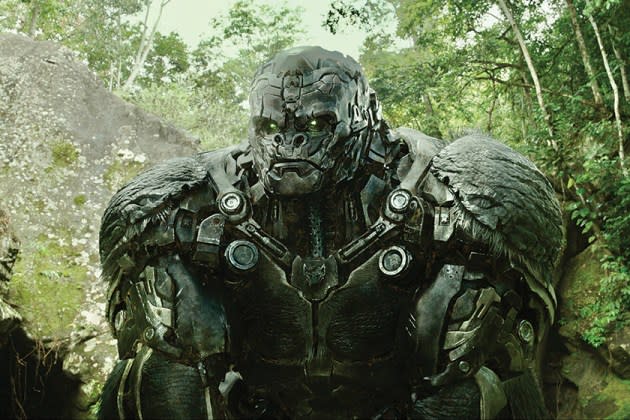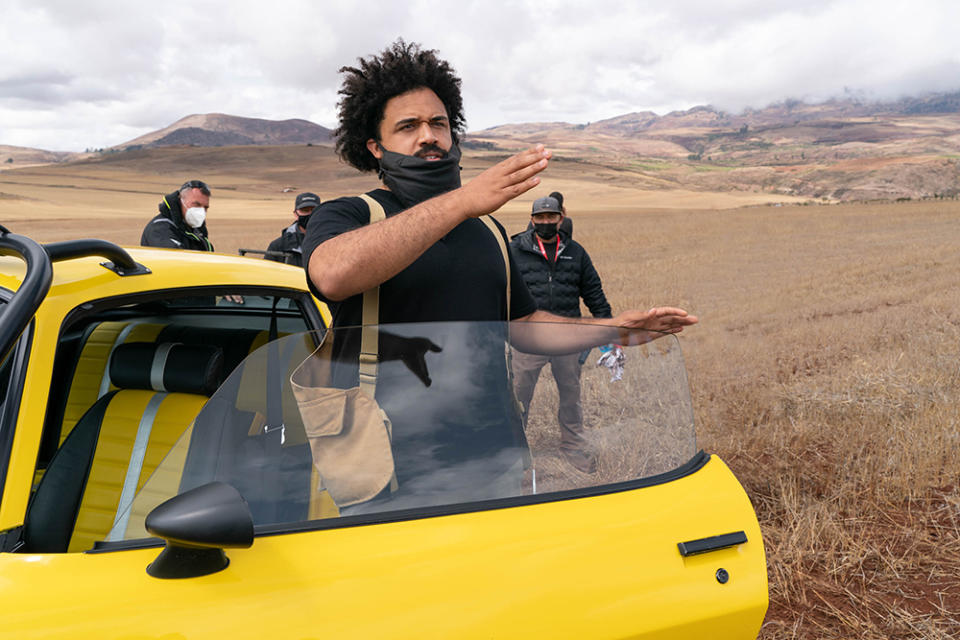Peru Aims for More Productions Post ‘Transformers: Rise of the Beasts’

Big changes are afoot in Peru, thanks to Paramount’s mega-budgeted “Transformers: Rise of the Beasts,” which shot there in 2021, literally saving hundreds of jobs badly hit by a six-month pandemic lockdown.
With street protests now a distant memory, talks are underway to address concerns that will make Peru a more attractive location shoot, including such measures as launching a film commission, introducing fiscal incentives, improving equipment availability as well as more training and support for the local audiovisual industry.
More from Variety
The need for these filming incentives were driven painfully home when the producers behind “Paddington in Peru,” the third film in the hit “Paddington” series, opted to shoot in Colombia because of its coveted rebates. While some second-unit filming will be done in Peru, the bulk will be shot in Colombia and London.
An executive committee is in the works, which will include the ministers of culture, economy & finance, foreign affairs, as well as heads of the customs board, promotional org PromPeru and the local producers guild, among others.
“We’re hoping that this will pave the way for the launch of a film commission and other much-needed initiatives,” says Conrado Falco, head of PromPeru in Los Angeles.
“Having ‘Transformers’ shoot here made people realize that the movie business is a viable industry, it energized our economy, impacting both big and small businesses,” notes Erika Chavez, head of the culture ministry’s audiovisual directorate, DAFO.
The most immediate impact has been the introduction of ATA, a new visa aimed at facilitating the entry of talent and crew.
Directed by Steven Caple Jr., the seventh iteration of the “Transformers” franchise is set in 1990s New York and Peru. It introduces a new breed of Transformer, the Maximals, who join the fray on planet Earth between the Autobots and Decepticons. The cast, led by Anthony Ramos and Dominique Fishback, are complemented by Michelle Yeoh, Peter Dinklage, Pete Davidson and Ron Perlman, who lend their distinctive voices to the robot characters. Peru provided the majestic backgrounds “Transformers” is known for. “Peru fit the bill and indeed, perhaps overdelivered on spectacular backdrops,” says Lee Rosenthal, president, worldwide physical production at Paramount Pictures.
The country takes up a significant portion of the film and much of the final acts, according to Rosenthal, who estimates that Paramount spent close to $20 million in Peru.
With pre-production taking up at least six months, the massive shoot entailed the shipment of dozens of trucks, vintage cars, motorbikes, drones, camera equipment and even explosives, says local producer Bruno Canale of Apu Prods., who provided production services to the movie and who also worked on Paramount’s “Dora and the Lost City of Gold” in Peru.

The main locations were in and around the ancient city of Cusco, the ancient citadel of Machu Picchu and the Peruvian Amazon. Tarapoto, considered the gateway to the Amazon jungle, hosted more than 200 people, with the production taking over all the hotels, a blessing given the dearth of tourists due to the pandemic. Road accesses and pathways were improved in the area for locals and tourists to later enjoy. Close to 2,000 people were employed in Cusco, including extras and ancillary services. A local restaurant/catering service that was about to go under ended up feeding as many as 1,500 people on major shoot days in Cusco.
According to Tarapoto mayor Lluni Perea Pinedo, the town’s first female mayor in 21 years, and Gilbert Escudero, president of the town’s chamber of commerce, tourism has already been up 8% since last year with 14 to 15 incoming flights daily since the shoot. They expect these figures to rise once the film opens worldwide on June 9.
“We anticipate a tremendous surge in interest and tourism in Peru once the movie comes out, but to hear that it kept businesses afloat is very heartening to know,” says Rosenthal who noted that to film in Machu Picchu, they had to limit the number of crew and the weight of their equipment on site at all times. Despite the reduced number of tourists, given the pandemic, they still had to avoid them, he adds.
“We always talk about the enviable locations that Peru has, its varied climates, geographies and cultures. However, little is said about the technical and artistic talent that we have, from the rigor and discipline with which our crews work at very competitive rates in the region,” says director-producer Joanna Lombardi.
Meanwhile, PromPeru has been functioning as an ad hoc film commission, facilitating visas, permits as well as providing support to the Oscar and Goya campaigns of Peru’s submissions and upgrading their online site, Film in Peru.
The challenge now is to spur the government to introduce tax incentives that will make Peru an even more enticing location. “There are six wildly successful film incentive programs around the world and we all know where they are. You see how their industries have flourished to the point that they’re building new stages and you almost can’t shoot there as they’re so busy,” Rosenthal points out.
“For new production centers to evolve and literally come on the map, I think is a good thing,” he says, adding: “If we played a part in helping to transform the way Peru is thinking about [its future as a filming location], I’m glad.”
Best of Variety
Oscars Predictions: Best Actor - There Will Be Blood in the Lead Actor Race
Everything We Know About 'I Am Legend 2,' Starring Will Smith and Michael B. Jordan
Sign up for Variety’s Newsletter. For the latest news, follow us on Facebook, Twitter, and Instagram.

